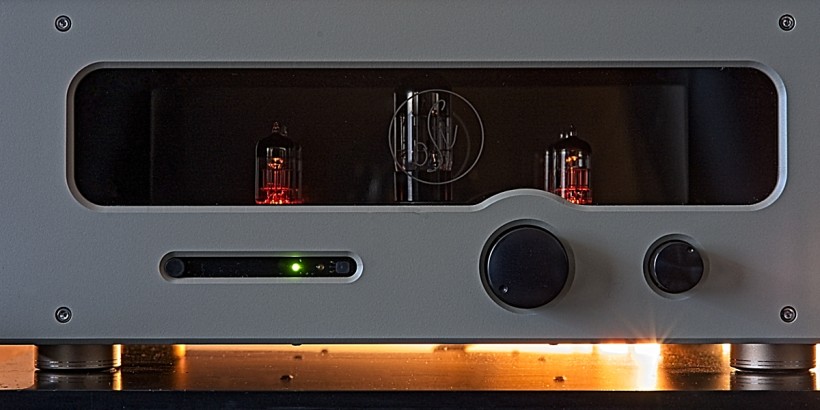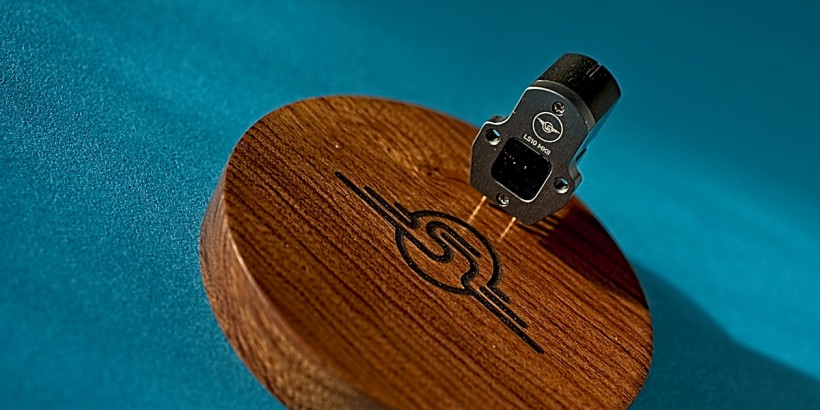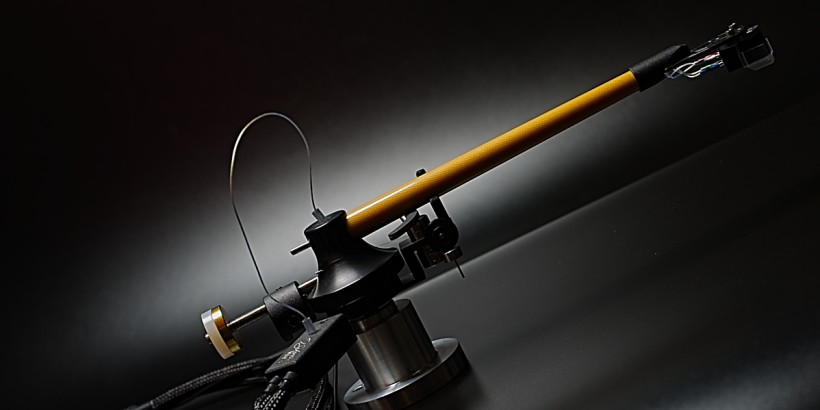The local Soyaton cable house officially emerged just recently, however at the 2019’s domestic show I was told that this establishment’s founder – Julian Soja – somehow came up with a series of very seasoned products. One word led to another and that’s how Soyaton The Benchmark loudspeaker cable became this review’s main dish. Enjoy!
Introduction
This assignment dates back to our domestic Audio Video Show in late 2019. Purposely I went there free from my camera and with any follow-up coverage and auditions crossed off the to-do list. What occupied me instead were just talks to manufacturers. In short, it paid off. This new approach led to many discoveries best introduced verbally by their makers, whereas additional upshots came in form of industry insights and review opportunities I’d surely miss during my previous event routine. But most importantly, no pressure associated with running like crazy from one place to another in hope of visiting and consequently covering as many as I possibly could, was nothing short of liberating. One of the go-to locations at the Radisson Blu Sobieski Hotel was the room where Audioform’s owner Tomasz Kursa exhibited. Some two years back the man provided me with affordable diffusers on highly effective duty at my place ever since. But this aside, just before the recent show I wondered whether he’d be able to replicate the impressive outcome he and his exhibition partners landed one year ago. Tomek quickly ditched the talk about his own goods to then move to cables inside the room and outside of Audioform’s own portfolio. He spared no praises about these and that’s how I was introduced to this review’s local Soyaton brand. Nonetheless, nearly all event locations introduce a concoction of unfamiliar factors; music, hardware, accessories, room acoustics and the usual show inconveniences on top of that. That’s why my brief visit inside the Audioform/Soyaton room led only to a commentary about audibly pleasant team effort found in there and that was it, nada about any specific component. Tomek deemed my approach as reasonable and promised to follow-up somewhere in the future, which in fact happened far sooner than it was initially expected.
Tomek quickly ditched the talk about his own goods to then move to cables inside the room and outside of Audioform’s own portfolio. He spared no praises about these and that’s how I was introduced to this review’s local Soyaton brand. Nonetheless, nearly all event locations introduce a concoction of unfamiliar factors; music, hardware, accessories, room acoustics and the usual show inconveniences on top of that. That’s why my brief visit inside the Audioform/Soyaton room led only to a commentary about audibly pleasant team effort found in there and that was it, nada about any specific component. Tomek deemed my approach as reasonable and promised to follow-up somewhere in the future, which in fact happened far sooner than it was initially expected.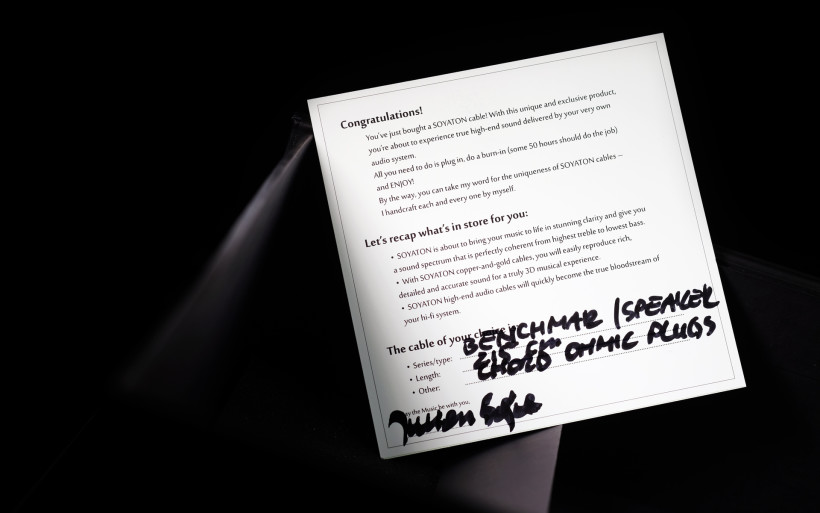 Several weeks after the local show, Tomek and Soyaton’s founder – Julian Soja – expressed their interest in visiting my digs. This introduced the perfect opportunity to finally find out whether all cable praises the former fired my way were based on something firm. It was no secret knowledge how the two gents met, their audio work was the connective glue. Julian ordered heavyweight room treatment at Audioform a while back, which naturally exposed this operation’s owner to products under the Soyaton banner. But most importantly, Tomek’s take on these spelled passion way beyond mere lobbyist stunts.
Several weeks after the local show, Tomek and Soyaton’s founder – Julian Soja – expressed their interest in visiting my digs. This introduced the perfect opportunity to finally find out whether all cable praises the former fired my way were based on something firm. It was no secret knowledge how the two gents met, their audio work was the connective glue. Julian ordered heavyweight room treatment at Audioform a while back, which naturally exposed this operation’s owner to products under the Soyaton banner. But most importantly, Tomek’s take on these spelled passion way beyond mere lobbyist stunts. Upon asking how his own audio adventure started, Julian informed me that he’s been a keen audio hobbyist for many years, has amassed quite the collection of hardware in the process, has finished his room and, as he puts it, in there a performance state very close to his very own sonic perfection was achieved. By the looks of the man’s crib (aka the Green Cave) proudly on display at Soyaton’s website, he clearly pushed far further than most people would. In search of ways to still improve, Julian started tinkering with cables; he went through a fair chunk of costly exoticism like a storm to then finally land in the DIY zone. Shy yet curious beginnings on this turf turned into many springs devoted to experiments and iterations, which eventually resulted in the very first series of Soyaton products – The Benchmark.
Upon asking how his own audio adventure started, Julian informed me that he’s been a keen audio hobbyist for many years, has amassed quite the collection of hardware in the process, has finished his room and, as he puts it, in there a performance state very close to his very own sonic perfection was achieved. By the looks of the man’s crib (aka the Green Cave) proudly on display at Soyaton’s website, he clearly pushed far further than most people would. In search of ways to still improve, Julian started tinkering with cables; he went through a fair chunk of costly exoticism like a storm to then finally land in the DIY zone. Shy yet curious beginnings on this turf turned into many springs devoted to experiments and iterations, which eventually resulted in the very first series of Soyaton products – The Benchmark. The Benchmark range ready and field-tested among friends translated to Julian’s own readiness to step outside of this circle and, under the Soyaton flag, expose his work to feedback of individuals such as yours truly, but that’s not all of it. After more than two decades spent in the banking sector’s managerial chair, the man decided to leave the corporate environment with strong intent to turn his hobby into regular and proper work. One quick glimpse at Soyaton’s website was all it took for me to notice its buttoned up and professional profile. English language exclusively, quality photo work, substantial information about available goods, minimal marketing fluff, a fair degree of honesty, tasteful overall execution, price tags on display and a legal business registered locally, all implied seriousness of this review’s audio house and surely were a good start.
The Benchmark range ready and field-tested among friends translated to Julian’s own readiness to step outside of this circle and, under the Soyaton flag, expose his work to feedback of individuals such as yours truly, but that’s not all of it. After more than two decades spent in the banking sector’s managerial chair, the man decided to leave the corporate environment with strong intent to turn his hobby into regular and proper work. One quick glimpse at Soyaton’s website was all it took for me to notice its buttoned up and professional profile. English language exclusively, quality photo work, substantial information about available goods, minimal marketing fluff, a fair degree of honesty, tasteful overall execution, price tags on display and a legal business registered locally, all implied seriousness of this review’s audio house and surely were a good start.
Build
The Soyaton operation was officially established just recently and its introductory family – The Benchmark – is the only one available for now. This series consists of three products in total; a power cord, interconnects finished exclusively with RCA plugs and today’s loudspeaker specimen offered in single runs only. All listed goods are bespoke and put together by Julian himself.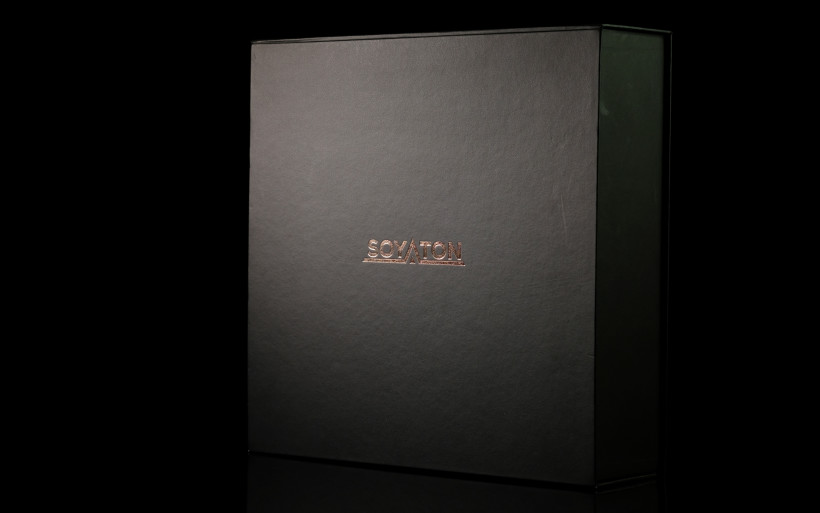 The product arrived inside of a nice matte black cardboard with the manufacturer’s logo on top. One side of the box was loaded with locking plot based on invisible magnets. The upper piece’s inner part held a small envelope with a short note from Julian. The enclosure’s bottom had a foam insert, on which the main dish rested inside of a semi-translucent bag. All in all, the package gave no reasons to complain. It looked as equally pro as the manufacturer’s site.
The product arrived inside of a nice matte black cardboard with the manufacturer’s logo on top. One side of the box was loaded with locking plot based on invisible magnets. The upper piece’s inner part held a small envelope with a short note from Julian. The enclosure’s bottom had a foam insert, on which the main dish rested inside of a semi-translucent bag. All in all, the package gave no reasons to complain. It looked as equally pro as the manufacturer’s site.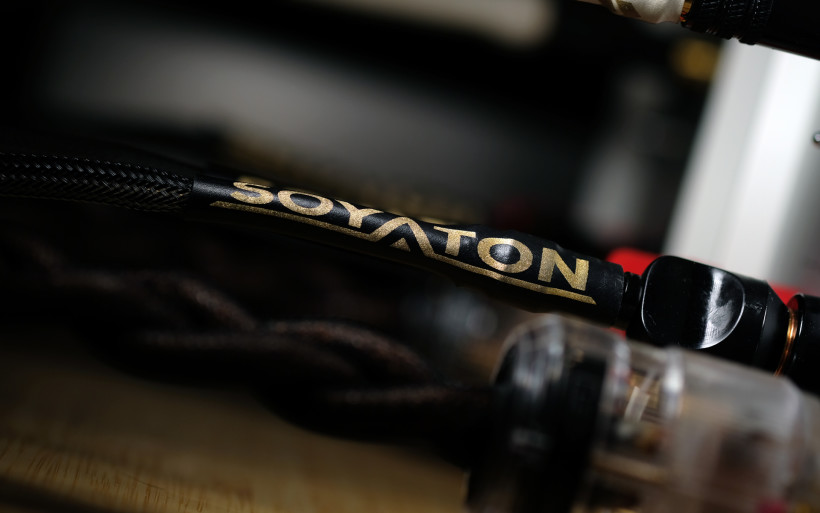 To address the elephant in the room, Julian doesn’t make his own conductors, which is nothing out of ordinary considering he runs his manufacture single-handedly. His wire of choice is OCC copper of 6N grade, directly purchased at one of Nippon’s certified plants and then shipped to the USA to have a 0.5-micron thick 24-carat gold plating applied. Once that’s done, then finished spools are sent to Julian’s workshop located in Poland’s city of Cracov for further assembly and his final QC. The expensive golden layer on copper conductors is in order to reduce the skin effect, which all by itself isn’t exactly new or shocking. Danny Labrecque of Luna Cables has been following a similar path with his ‘neo-vintage’ wires, however the distinction lies within two types of coating. Said Canadian went with tinning a’la old cables by Western Electric, whereas Julian took the gold-plated detour. He did so not due to this precious metal’s conductivity (silver beats gold on this count btw.), but its impact on overall sonic profile of the product.
To address the elephant in the room, Julian doesn’t make his own conductors, which is nothing out of ordinary considering he runs his manufacture single-handedly. His wire of choice is OCC copper of 6N grade, directly purchased at one of Nippon’s certified plants and then shipped to the USA to have a 0.5-micron thick 24-carat gold plating applied. Once that’s done, then finished spools are sent to Julian’s workshop located in Poland’s city of Cracov for further assembly and his final QC. The expensive golden layer on copper conductors is in order to reduce the skin effect, which all by itself isn’t exactly new or shocking. Danny Labrecque of Luna Cables has been following a similar path with his ‘neo-vintage’ wires, however the distinction lies within two types of coating. Said Canadian went with tinning a’la old cables by Western Electric, whereas Julian took the gold-plated detour. He did so not due to this precious metal’s conductivity (silver beats gold on this count btw.), but its impact on overall sonic profile of the product.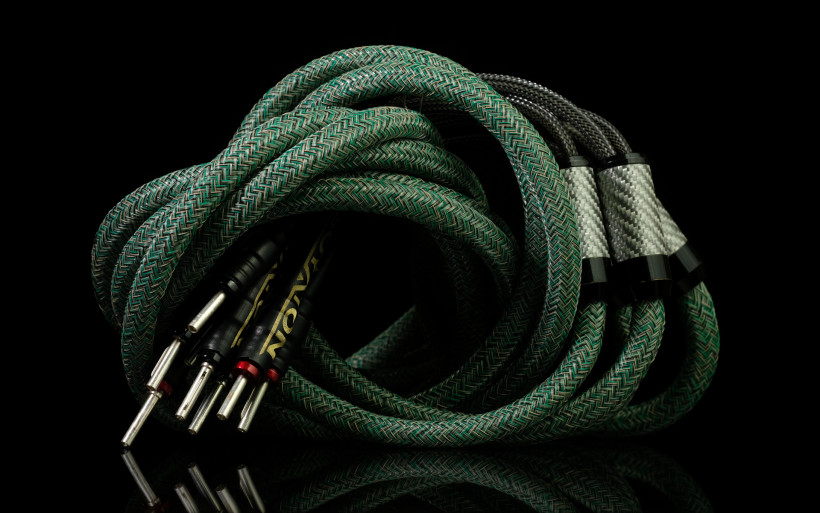 The Soyaton website also informs us about today’s low capacity. If this value is low, an amp has it easier to drive speakers according to Julian and that’s the reason why he strongly believes that less is more on this specific count. The Benchmark for loudspeakers purposely doesn’t sport a lot of conductive material and that’s one of key reasons behind its slinkiness, which translates to high user-friendliness, whereas overall low mass of the product is the additional upshot. Soyaton’s founder also incorporated an interesting insulation and mechanical decoupling plot in all his goods. He combined noise-cancelling internal geometry, silicone tubing partially filled with air and quite loosely braided outer sleeving by Techflex.
The Soyaton website also informs us about today’s low capacity. If this value is low, an amp has it easier to drive speakers according to Julian and that’s the reason why he strongly believes that less is more on this specific count. The Benchmark for loudspeakers purposely doesn’t sport a lot of conductive material and that’s one of key reasons behind its slinkiness, which translates to high user-friendliness, whereas overall low mass of the product is the additional upshot. Soyaton’s founder also incorporated an interesting insulation and mechanical decoupling plot in all his goods. He combined noise-cancelling internal geometry, silicone tubing partially filled with air and quite loosely braided outer sleeving by Techflex.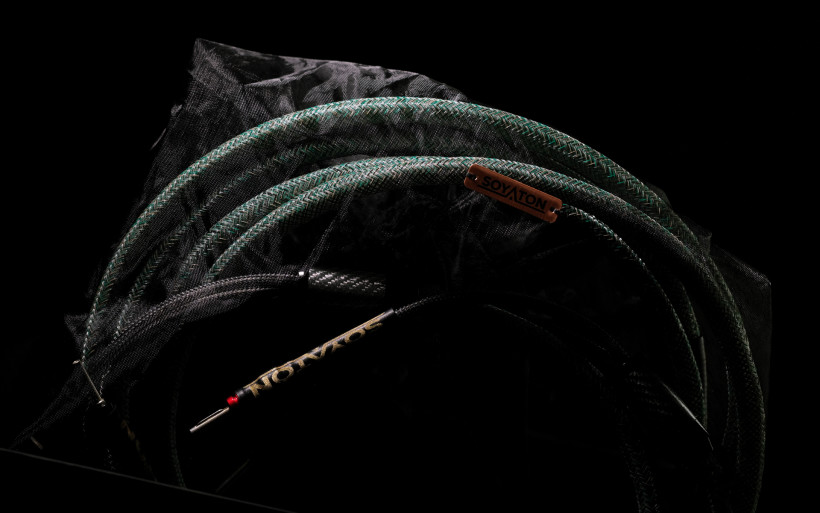 My loaner’s termination based on silver-plated copper ChordOhmic 4mm banana connectors is no accidental either. According to Julian, plugs should be fast and transparent and to achieve this goal, he aimed at parts of low capacitance and high conductivity. Once all key semi-products are taken into account, this review’s loudspeaker cable of 2.4m length in total incorporates a blend of three different metals; copper, silver and gold.
My loaner’s termination based on silver-plated copper ChordOhmic 4mm banana connectors is no accidental either. According to Julian, plugs should be fast and transparent and to achieve this goal, he aimed at parts of low capacitance and high conductivity. Once all key semi-products are taken into account, this review’s loudspeaker cable of 2.4m length in total incorporates a blend of three different metals; copper, silver and gold. As far as overall assembly goes, the Benchmark might seem flimsy at first; it rattles like a snake and squeezes very easily; in two fingers upon applying bare minimum of force. However, this isn’t the evidence of poor put-togetherness and/or cutting corners on internal filler, which in large part happens to be air after all. The sensation of today’s fragility fades away quickly, is not a con and surely not a valid reason to be worried. Due to its internal insulation also by design based on pretty much empty space, the far pricier Siltech Crown Princess speaker cable invoked the very much alike impression. The Benchmark is very light, bendy and even thinner, hence similarly easy to manage if not more. Its banana plugs feel unbreakable versus hollow BFAs. Over several weeks of usage and dozens of on/offs, not a single stunt these ends pulled. Due to inherent flexibility and no issues along the road, now I’m confident to say that Soyaton’s loudspeaker leash in fact can withstand a lot. Its low mass will prevent any mechanical leverages, which could potentially result in its plugs bent. These tough specimens by The Chord Company can literally serve as can openers.
As far as overall assembly goes, the Benchmark might seem flimsy at first; it rattles like a snake and squeezes very easily; in two fingers upon applying bare minimum of force. However, this isn’t the evidence of poor put-togetherness and/or cutting corners on internal filler, which in large part happens to be air after all. The sensation of today’s fragility fades away quickly, is not a con and surely not a valid reason to be worried. Due to its internal insulation also by design based on pretty much empty space, the far pricier Siltech Crown Princess speaker cable invoked the very much alike impression. The Benchmark is very light, bendy and even thinner, hence similarly easy to manage if not more. Its banana plugs feel unbreakable versus hollow BFAs. Over several weeks of usage and dozens of on/offs, not a single stunt these ends pulled. Due to inherent flexibility and no issues along the road, now I’m confident to say that Soyaton’s loudspeaker leash in fact can withstand a lot. Its low mass will prevent any mechanical leverages, which could potentially result in its plugs bent. These tough specimens by The Chord Company can literally serve as can openers. The matter of today’s visuals is up to a debate. Aluminium splitters with bright silver carbon inserts, big golden letters on substantial heat-shrink cuts and rather flashy colour scheme on external sleeving, all net the result not exactly modest or universally appealing. Personally I couldn’t care less, you might, however what I do care about to quite an extent is usability. On this count The Benchmark proved to be one of the most enjoyable loudspeaker cables I’ve had the pleasure of working with. On this count it positioned itself way up there with my LessLoss C-MARC, most likely a notch higher than Siltech’s anniversary Crown Princess model and way above my Boenicke S3. And lastly, this report’s leash is directional but free from the usual arrow guidelines. Instead the first and last letter of the Soyaton logo on each heat-shrink tube serve as direction indicators; ‘S’ goes near the amp side, ‘N’ right next to terminals on the loudspeaker end. Different yet so simple, isn’t it?
The matter of today’s visuals is up to a debate. Aluminium splitters with bright silver carbon inserts, big golden letters on substantial heat-shrink cuts and rather flashy colour scheme on external sleeving, all net the result not exactly modest or universally appealing. Personally I couldn’t care less, you might, however what I do care about to quite an extent is usability. On this count The Benchmark proved to be one of the most enjoyable loudspeaker cables I’ve had the pleasure of working with. On this count it positioned itself way up there with my LessLoss C-MARC, most likely a notch higher than Siltech’s anniversary Crown Princess model and way above my Boenicke S3. And lastly, this report’s leash is directional but free from the usual arrow guidelines. Instead the first and last letter of the Soyaton logo on each heat-shrink tube serve as direction indicators; ‘S’ goes near the amp side, ‘N’ right next to terminals on the loudspeaker end. Different yet so simple, isn’t it?
Sound
In order to review Soyaton’s The Benchmark loudspeaker cable, fidata HFAS-S10U handled storage and transport duties, then LampizatOr Pacific DAC (KR Audio T-100/Living Voice 300B + KR Audio 5U4G Ltd. Ed.) took over to pass the signal to either Bakoon AMP-13R or Trilogy 925, and then to Boenicke W11 SE+ and Cube Audio Nenuphar floorstanders respectively. At some point two other products on duty with Cube Audio’s marvel were involved; FirstWatt F7 power amp and Thöress DFP line stage. All key components were connected via LessLoss C-MARC cables to the GigaWatt PC-3 SE EVO+ power conditioner, which was then married to the main in-wall outlet via LC-3 EVO cable by the same manufacturer. The Amber-modded Excellence ICs by Audiomica Laboratory were used in-between my DAC and remaining components during all auditions.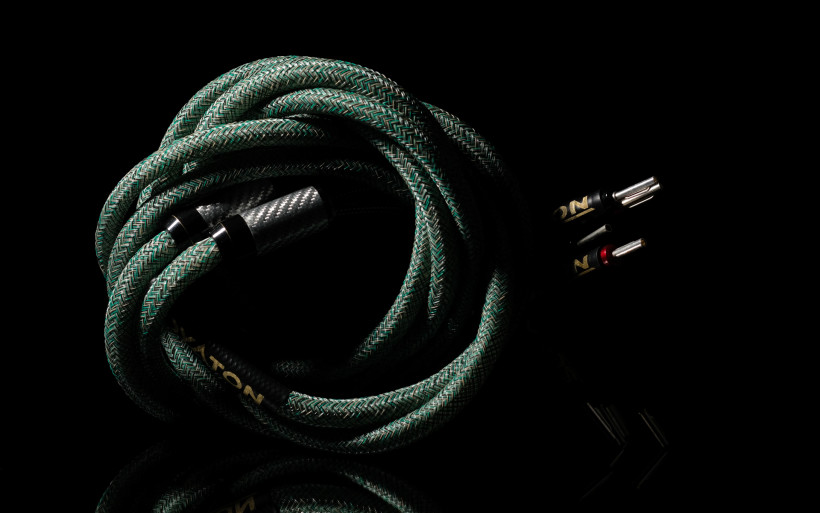 Before the evaluation phase I dusted off the LessLoss C-MARC speaker cable. Its ask quite in the ballpark of today’s product was the reason. It simply made more sense to focus on these two similarly tiered specimens, instead of going the far costlier Boenicke S3 route. At some point the Swiss overkill stepped in, but briefly and supportively. In any case, the first audition was in order shortly past my two guests’ arrival. After all introductory courtesies and several words about my platform, all three of us sat down and had a listen with my S3 cable engaged first. Then it was removed, Julek’s item stepped in and the whole procedure was then repeated once more. The next two subsequent skirmishes involved today’s item versus the LessLoss instead of the S3. All listed swaps took us less than an hour in total. But most importantly, neither me nor my visitors had any doubts about what happened during that time.
Before the evaluation phase I dusted off the LessLoss C-MARC speaker cable. Its ask quite in the ballpark of today’s product was the reason. It simply made more sense to focus on these two similarly tiered specimens, instead of going the far costlier Boenicke S3 route. At some point the Swiss overkill stepped in, but briefly and supportively. In any case, the first audition was in order shortly past my two guests’ arrival. After all introductory courtesies and several words about my platform, all three of us sat down and had a listen with my S3 cable engaged first. Then it was removed, Julek’s item stepped in and the whole procedure was then repeated once more. The next two subsequent skirmishes involved today’s item versus the LessLoss instead of the S3. All listed swaps took us less than an hour in total. But most importantly, neither me nor my visitors had any doubts about what happened during that time.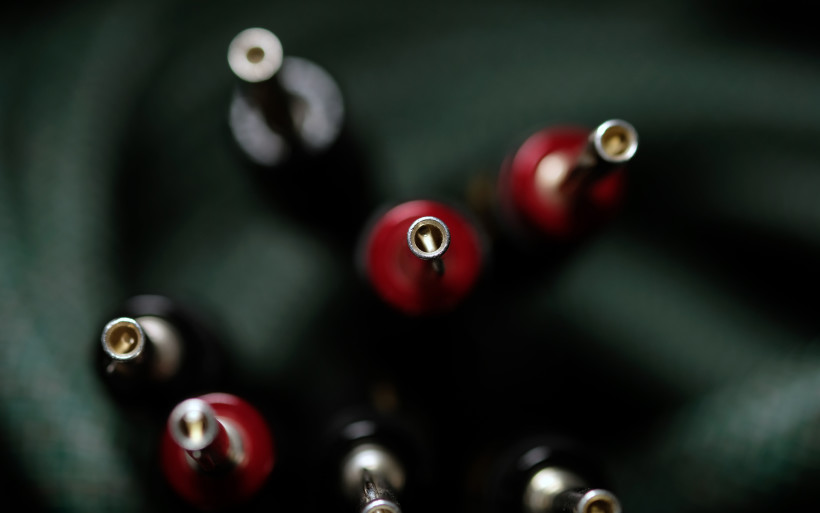 The Benchmark held no mystery status. Not only it was very clear what it did versus the other two items, but its input was also very much familiar. It’s safe to say that it took me back in time to the early 2019’s memories associated with the Luna Cables Rouge experience. Today’s introduced not exactly the same but quite alike sonic flavour; strongly focused on humanely outlined virtual shapes, generously differentiated and applied musical tissue, overall vividness and everything painted on pristinely black backdrop. It was heard loud and clear that Julian aimed at a cable voiced to present music in fashion pleasantly tactile, wet and sensual rather than precisely chiseled, pinpoint accurate and magnified. The Benchmark didn’t fell short on insight, not at all, but emphasized joy boosters. Elasticity and textural charm clearly occupied top positions on its priority list. But this aside, such tuning speaks clearly about Julian’s own highly sophisticated taste, surely developed during time spent with his primary transports; a reel-to-reel deck right next to a turntable. Both of these say a lot about what type of musical presentation he’s into, but this review’s item even more so.
The Benchmark held no mystery status. Not only it was very clear what it did versus the other two items, but its input was also very much familiar. It’s safe to say that it took me back in time to the early 2019’s memories associated with the Luna Cables Rouge experience. Today’s introduced not exactly the same but quite alike sonic flavour; strongly focused on humanely outlined virtual shapes, generously differentiated and applied musical tissue, overall vividness and everything painted on pristinely black backdrop. It was heard loud and clear that Julian aimed at a cable voiced to present music in fashion pleasantly tactile, wet and sensual rather than precisely chiseled, pinpoint accurate and magnified. The Benchmark didn’t fell short on insight, not at all, but emphasized joy boosters. Elasticity and textural charm clearly occupied top positions on its priority list. But this aside, such tuning speaks clearly about Julian’s own highly sophisticated taste, surely developed during time spent with his primary transports; a reel-to-reel deck right next to a turntable. Both of these say a lot about what type of musical presentation he’s into, but this review’s item even more so.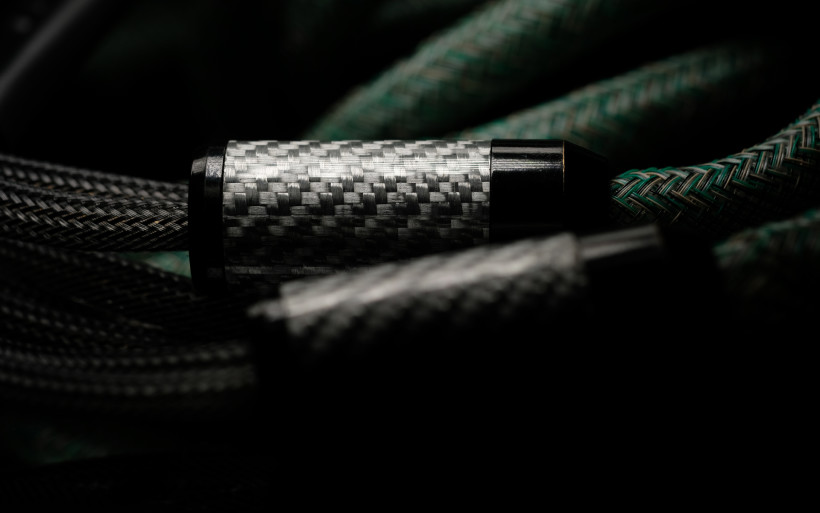 Several hours is time sufficient enough to get the gist of who you talk to. From the get-go Julek struck me as soft-spoken utmost polite white collar individual and, dare I say, the loaner he brought with him proved to aptly reflect this. The Benchmark very quickly positioned itself among cable specimens behaviourally fully adult and free from any flashiness or extremes. It’s quite the achievement to land a cable voiced like so and also free from abnormal temperature rise, excessive bloom, slow pace and truncated top end as byproducts. Today’s didn’t suffer from any of these. But most importantly, this one also is Soyaton’s the very first commercial effort. Without this info, yours truly wouldn’t have guessed.
Several hours is time sufficient enough to get the gist of who you talk to. From the get-go Julek struck me as soft-spoken utmost polite white collar individual and, dare I say, the loaner he brought with him proved to aptly reflect this. The Benchmark very quickly positioned itself among cable specimens behaviourally fully adult and free from any flashiness or extremes. It’s quite the achievement to land a cable voiced like so and also free from abnormal temperature rise, excessive bloom, slow pace and truncated top end as byproducts. Today’s didn’t suffer from any of these. But most importantly, this one also is Soyaton’s the very first commercial effort. Without this info, yours truly wouldn’t have guessed.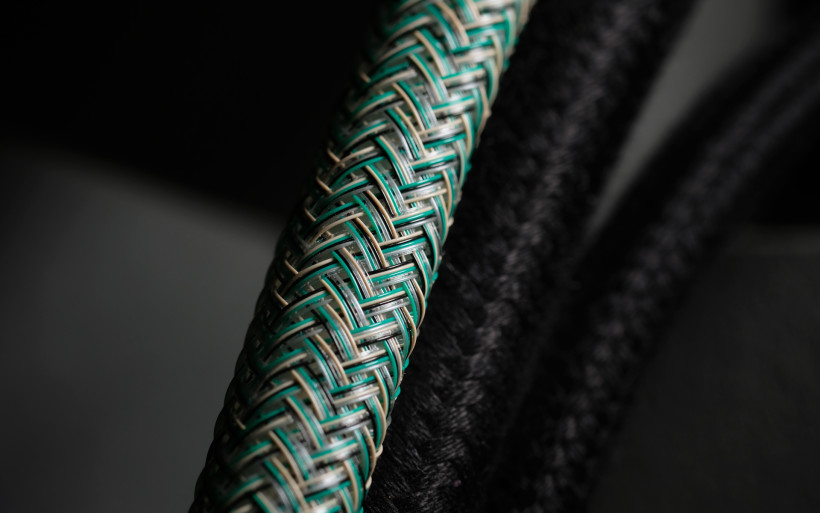 The Benchmark’s battle against the most tonally accurate and in general transparent cable I’m aware of – LessLoss C-MARC – showed several clear similarities in their performance. Both products sported quite identically black and very much alive backdrop. Both invoked the feeling of finely applied omnipresent darkness as the firm foundation, upon which everything else was built free from any hints of garishness. The Lithuanian did this via its clever internal noise-cancelling plot, whereas in Julian’s product the same effect was achieved via gold-plating. Two different measures, yet the base result was aurally pretty much the same. To move on, both specimens in my setup provided similar listening effortlessness, liquidity and completeness. Both allowed for intake of musical content digestibly and pleasantly enough to leave any signs of fatigue at the door.
The Benchmark’s battle against the most tonally accurate and in general transparent cable I’m aware of – LessLoss C-MARC – showed several clear similarities in their performance. Both products sported quite identically black and very much alive backdrop. Both invoked the feeling of finely applied omnipresent darkness as the firm foundation, upon which everything else was built free from any hints of garishness. The Lithuanian did this via its clever internal noise-cancelling plot, whereas in Julian’s product the same effect was achieved via gold-plating. Two different measures, yet the base result was aurally pretty much the same. To move on, both specimens in my setup provided similar listening effortlessness, liquidity and completeness. Both allowed for intake of musical content digestibly and pleasantly enough to leave any signs of fatigue at the door.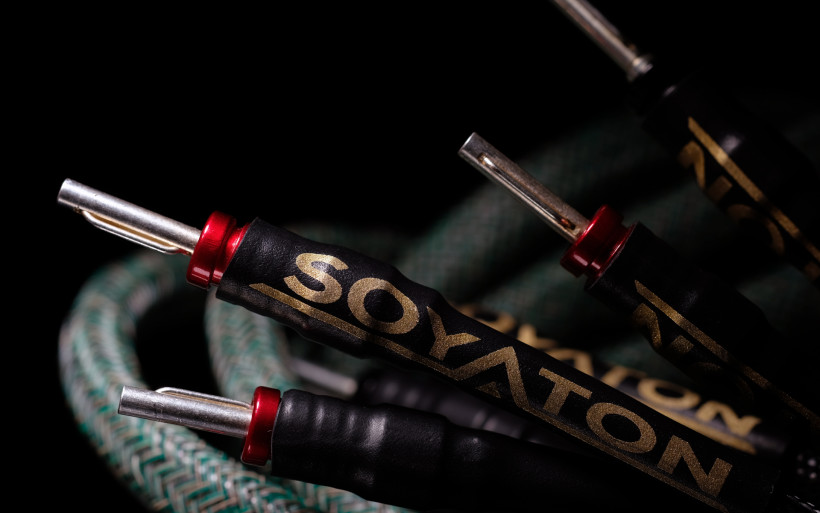 The more comparisons were in the past, the more it struck me how different The Banchmark and C-MARC were also. As I wrote up above, all three of us – Julian, Tomek and me – pretty much instantly grasped all similarities and factors which set both compared products apart. But after several intense days spent on single-handedly conducted auditions plus multiple hardware and cable swaps, my aural fix got stronger, thus all disparities this much more clear. The Benchmark was heftier in the upper bass band and bloomier, hence naturally the LessLoss sported slimmer attitude. The former also was just a hair slower and, due to its midbass a bit emphasized, it packed slightly less sensible crack. The Lithuanian had its vocal lines and instruments found in the mid realm all outlined with softer pencil and internally more moist, whereas today’s reversed this order via all shapes’ contours sketched stronger and coloured with pastel palette rather than oil. The C-MARC had its top end more open and clear versus the less frosty yet longer on decay Benchmark.
The more comparisons were in the past, the more it struck me how different The Banchmark and C-MARC were also. As I wrote up above, all three of us – Julian, Tomek and me – pretty much instantly grasped all similarities and factors which set both compared products apart. But after several intense days spent on single-handedly conducted auditions plus multiple hardware and cable swaps, my aural fix got stronger, thus all disparities this much more clear. The Benchmark was heftier in the upper bass band and bloomier, hence naturally the LessLoss sported slimmer attitude. The former also was just a hair slower and, due to its midbass a bit emphasized, it packed slightly less sensible crack. The Lithuanian had its vocal lines and instruments found in the mid realm all outlined with softer pencil and internally more moist, whereas today’s reversed this order via all shapes’ contours sketched stronger and coloured with pastel palette rather than oil. The C-MARC had its top end more open and clear versus the less frosty yet longer on decay Benchmark. Of all differences between both compared cables, bass would be my top most intense pick and the second spot would go to midrange outlines. Sizing of virtual shapes and the amount of on-stage air in-between them would be the third key factor. The leaner C-MARC had these a bit bigger and presented in more insightful fashion, whereas today’s sported more romantic, intimate and relaxed approach. All this might colour the former as universally applicable and it is indeed. Naturally the latter’s more expressive take on music plus more generous own input should then turn it into a situational item, but that’s oversimplified. The Benchmark’s backbone is very much universal, whereas everything else it does is tastefully executed and not overdone. This domestic cable ain’t a one trick pony and it won’t break any system, that’s off the table. However, setups in a desperate need of moisture and heft injection downstairs will benefit from its presence the most. In such an environment this report’s product will shine the brightest. But on sheer quality count it scored notes as high as my C-MARC, that’s the key takeaway.
Of all differences between both compared cables, bass would be my top most intense pick and the second spot would go to midrange outlines. Sizing of virtual shapes and the amount of on-stage air in-between them would be the third key factor. The leaner C-MARC had these a bit bigger and presented in more insightful fashion, whereas today’s sported more romantic, intimate and relaxed approach. All this might colour the former as universally applicable and it is indeed. Naturally the latter’s more expressive take on music plus more generous own input should then turn it into a situational item, but that’s oversimplified. The Benchmark’s backbone is very much universal, whereas everything else it does is tastefully executed and not overdone. This domestic cable ain’t a one trick pony and it won’t break any system, that’s off the table. However, setups in a desperate need of moisture and heft injection downstairs will benefit from its presence the most. In such an environment this report’s product will shine the brightest. But on sheer quality count it scored notes as high as my C-MARC, that’s the key takeaway.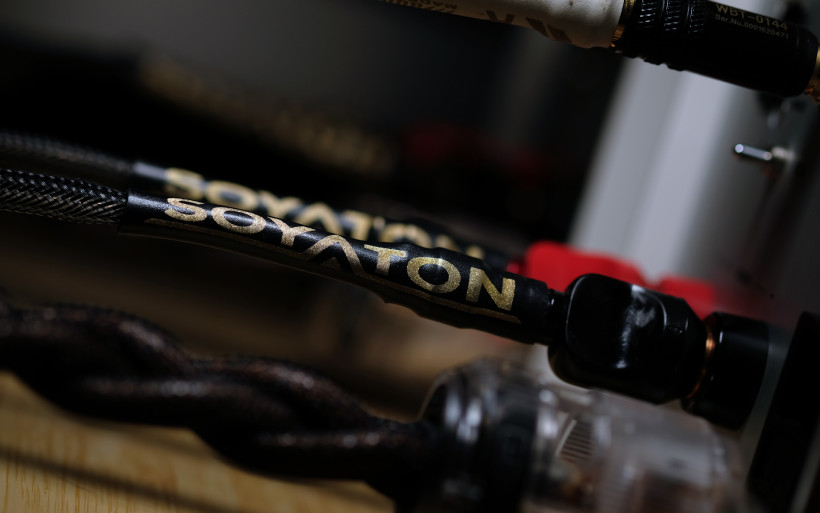 As far as setup compliance went, Julek’s cable was a spot on in three configurations out of five I came up with in total. Boenicke W11 SE+ floorstanders married to the Bakoon AMP-13R definitely benefited from today’s extra bass input, and so did Cube Audio’s Nenuphar connected to the FirstWatt F7 fronted via Thöress DFP. This line stage with Audiodinamica’s BeCube monos and Sven’s second best also enjoyed The Benchmark’s presence. The two hardware combinations that didn’t to the same extent involved the already inherently beefy and mild Trilogy 925. Both Nenuphar and my W11 SE+ were perfectly happy with the C-MARC in-between them and the English integrated. The takeaway based on all listed sets was clear, though. As per usual, the Lithuanian cable instructed me about potential matters to address. In three cases out of five the primary was associated with bass, whereas today’s had just what it took to improve upon this aspect with no major drawbacks in return.
As far as setup compliance went, Julek’s cable was a spot on in three configurations out of five I came up with in total. Boenicke W11 SE+ floorstanders married to the Bakoon AMP-13R definitely benefited from today’s extra bass input, and so did Cube Audio’s Nenuphar connected to the FirstWatt F7 fronted via Thöress DFP. This line stage with Audiodinamica’s BeCube monos and Sven’s second best also enjoyed The Benchmark’s presence. The two hardware combinations that didn’t to the same extent involved the already inherently beefy and mild Trilogy 925. Both Nenuphar and my W11 SE+ were perfectly happy with the C-MARC in-between them and the English integrated. The takeaway based on all listed sets was clear, though. As per usual, the Lithuanian cable instructed me about potential matters to address. In three cases out of five the primary was associated with bass, whereas today’s had just what it took to improve upon this aspect with no major drawbacks in return.
Summary
As a reporter with a degree of knowledge about the audio industry, over the years I developed a fairly thick filter, which renders me quite immune to marketing praises towards any specific hardware, especially heard during chit-chats at various events. These talks rarely go beyond introductory courtesies, however I’m happy that Tomek incentivized Julian to visit my place and do a proper follow-up. The latter gent’s operation officially emerged just recently, but its first loudspeaker cable – Soyaton The Benchmark – performed very much like a product fit for a well-established audio house.
Even though this can be said about many other similar items, today’s is executed nicely, built to last, very flexible and light. After weeks on the job at my place, not only it didn’t introduce any craves to change any of its usability aspects, but also proved to be one of the most compliant loudspeaker specimens I’ve came across to date. The Benchmark isn’t exactly affordable, however its ask reflects performance accurately, which is just the way it should be. I strongly believe that cables this costly should score high notes on refinement; smoothness, backdrop tidiness, textural generosity, sonic liquidity, spatial clarity plus freedom from juvenile excess in any direction and fatigue. The Benchmark easily fits the profile and there’s no question about that in my mind. But its core voicing supported via several twists netted the result extremely easy to intake and appreciate, also on point with constant sensation of overall completeness, expressiveness and deep connection with music. It takes skill and capable ears to land such a product, which is why the Soyaton audio house now has my full attention and I do look forward to Julian Soja’s next developments. ‘Till next time!
Associated Equipment:
- Amplifier: Trilogy 925, FirstWatt F7, Bakoon AMP-13R, Audiodinamica BeCube
- Preamplifiers: Thöress DFP
- Speakers: Boenicke W11 SE+, Cube Audio Nenuphar
- DAC: LampizatOr Pacific (KR Audio T-100 / Living Voice 300B + KR Audio 5U4G Ltd. Ed.)
- Transport: fidata HFAS-S10U
- Speaker cables: Boenicke Audio S3, LessLoss C-MARC
- Interconnects: Audiomica Laboratory Erys Excellence
- Power components: Gigawatt LC-3 EVO -> PC-3 SE EVO+, Gigawatt PF-2 + Gigawatt LC-2 MK2 + Forza AudioWorks Noir Concept/Audiomica Laboratory Ness Excellence/LessLoss C-MARC
- Rack: Franc Audio Accesories Wood Block Rack
- Music: NativeDSD
Retail prices of reviewed components in EU (incl. tax):
- Soyaton The Benchmark loudspeaker cable (2.4m): €2’300
Manufacturer: Soyaton































